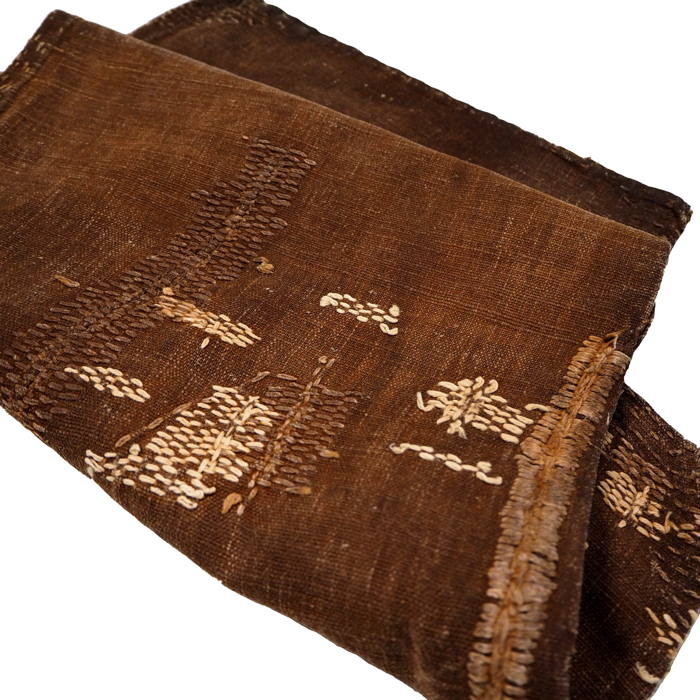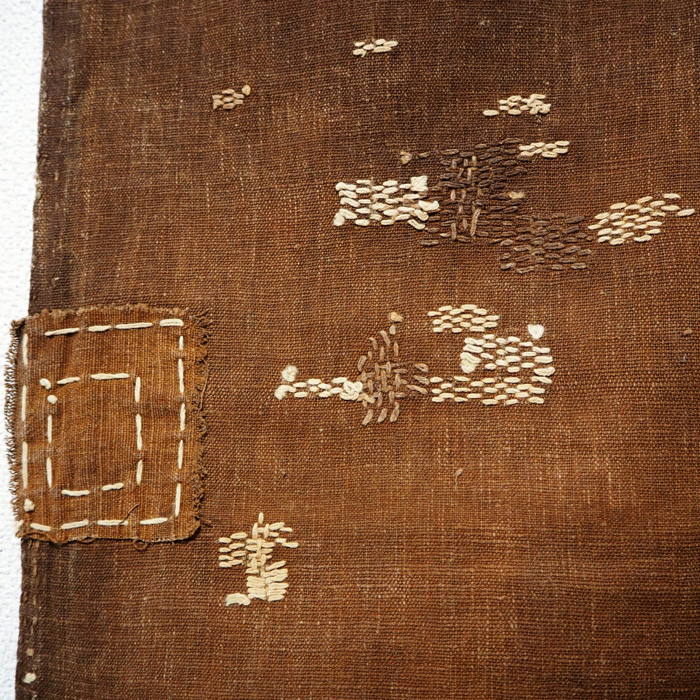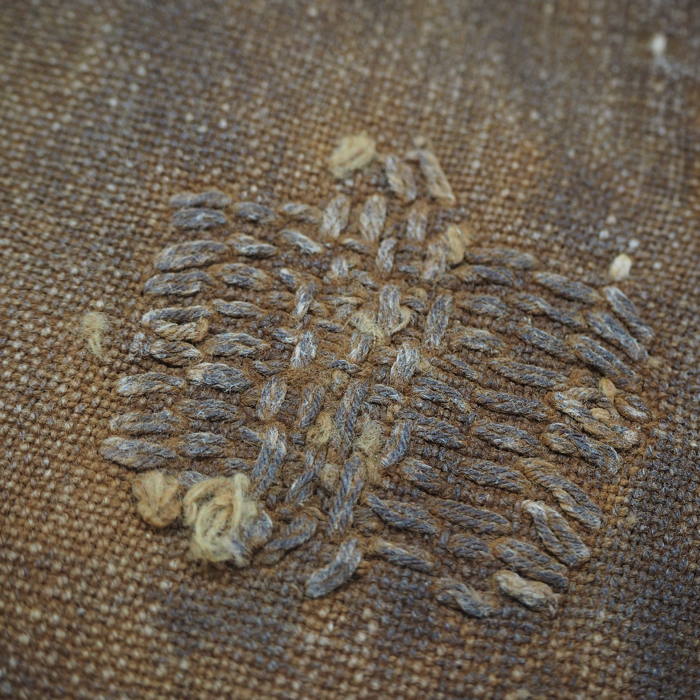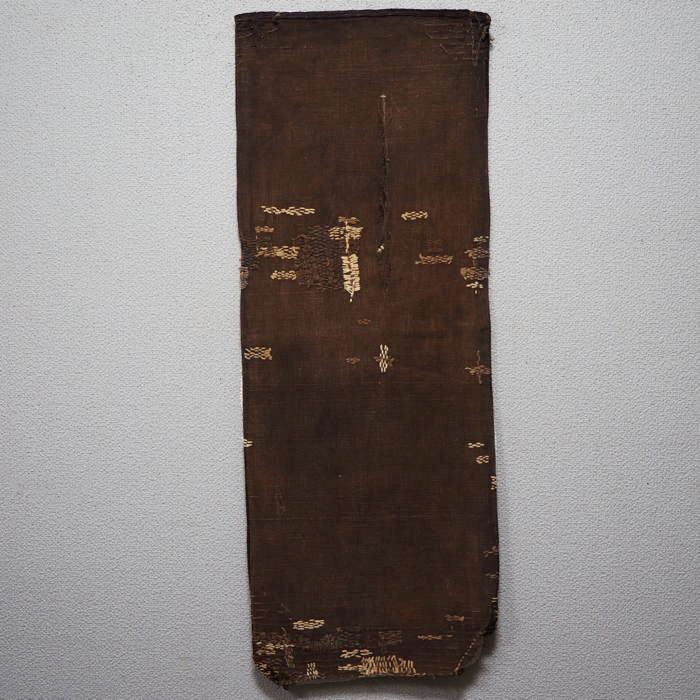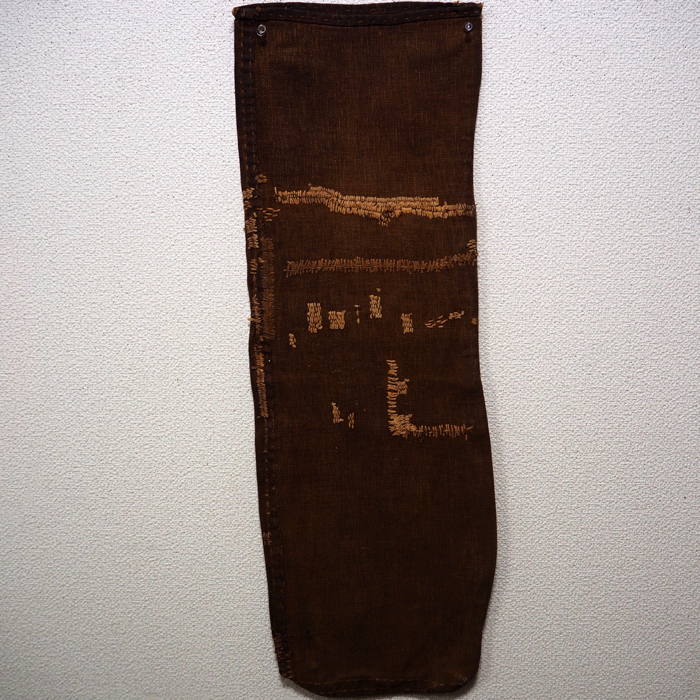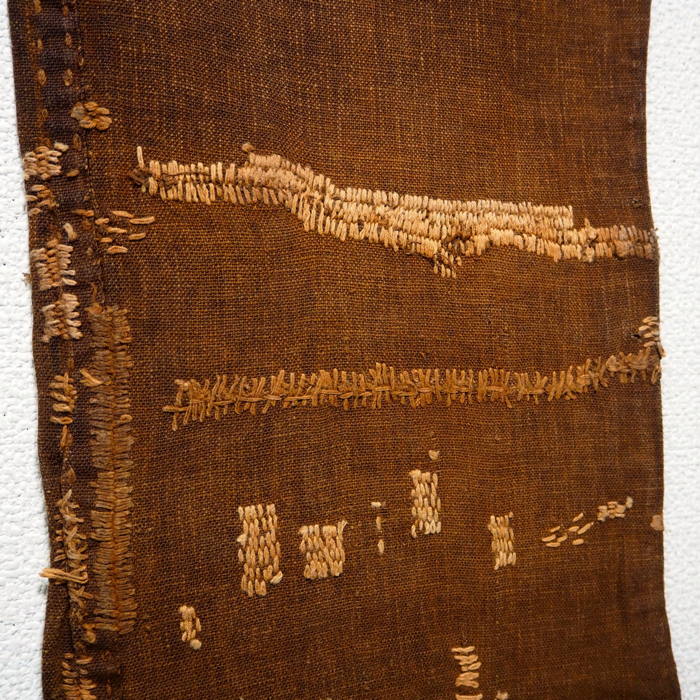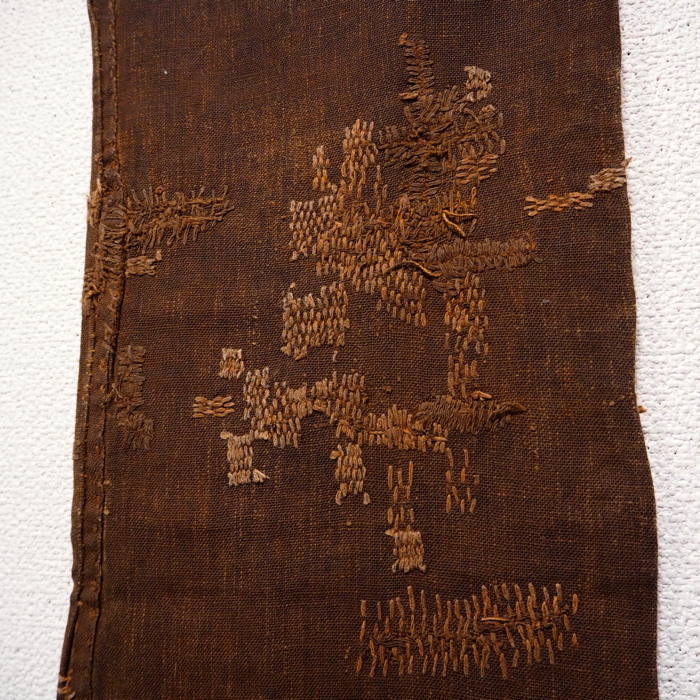The beauty of these 75 to 100-year-old Japanese sakabukuro sake bags emanates from their hard-working past, which has—quite by accident—become a large part of their collectability. If one had to ascribe a color to these bags, burnt umber would be the closest hue. These cotton sake straining bags have been saturated over the years with green persimmon tannin, or kakishibu, eventually turning the material into a rich leather-like color. The stitches are not delicate, or meant to blend. Like patching a rubber tire, these are simply utilitarian repairs. Aesthetics does not play a role.
These sakabukuro, which means bag, or pocket, were filled by the sake brewers with unrefined sake (nigori-sake) allowing the pure sake to slowly drip through the material into collection vats below.
Frugal sake brewers would give these bags a longer life by carefully hand-stitching patches (mukatenui) on the bags with thick cotton thread. It is the random beauty of these repairs that give these bags such sophisticated abstract beauty, making these uniquely Japanese textiles highly sought after today.
All of the sake bags pictured below can be found at Kimonoboy, an online dealer of antique and vintage Japanese folk textiles with a specialty in mid-1800s to early 1900s cotton boro futon covers, peasant and farmer clothing and other early textiles. The owners are Jim and Akiko Austin. More about these sake bags can be found here.
++++
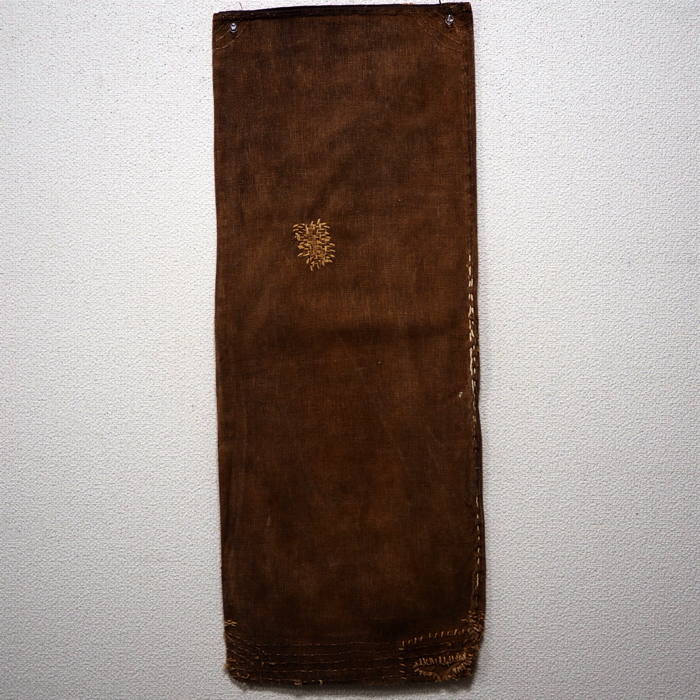
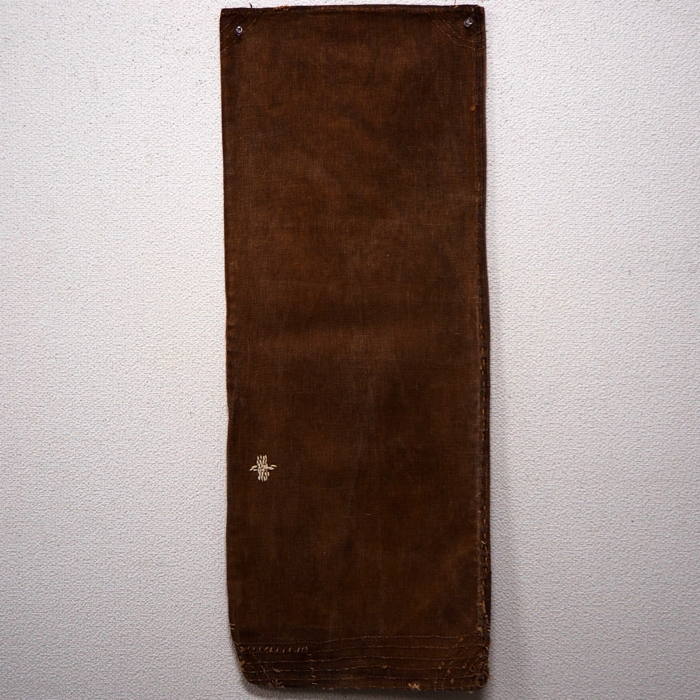
Hand-loomed and handmade, this bag (top, above, and below) has been extensively repaired over the years. This is a fabulous example of the effort in which the Japanese sake brewers took to extend the life of each precious sake bag. Labor to repair the bag was obviously less expensive than purchasing a new bag. These sakaburo bags have been repaired many times.
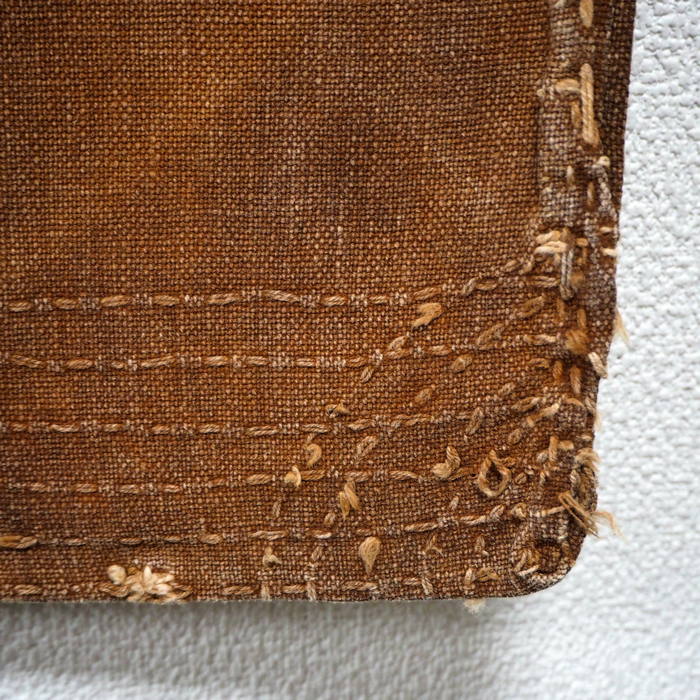
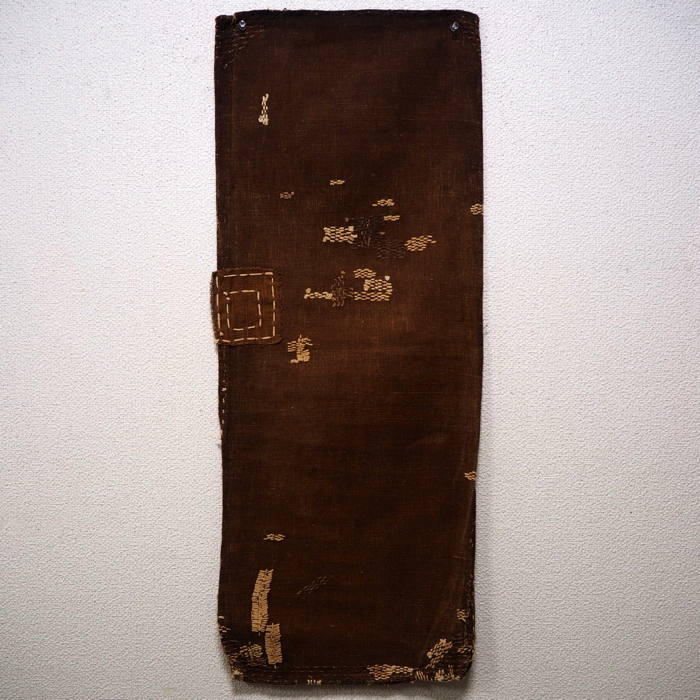
Above, and all images below: Cotton boro repaired Sakabukuro sake bags
